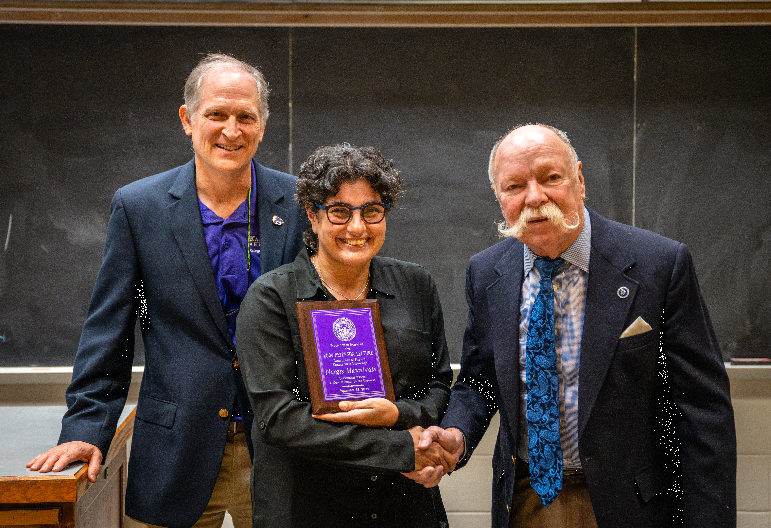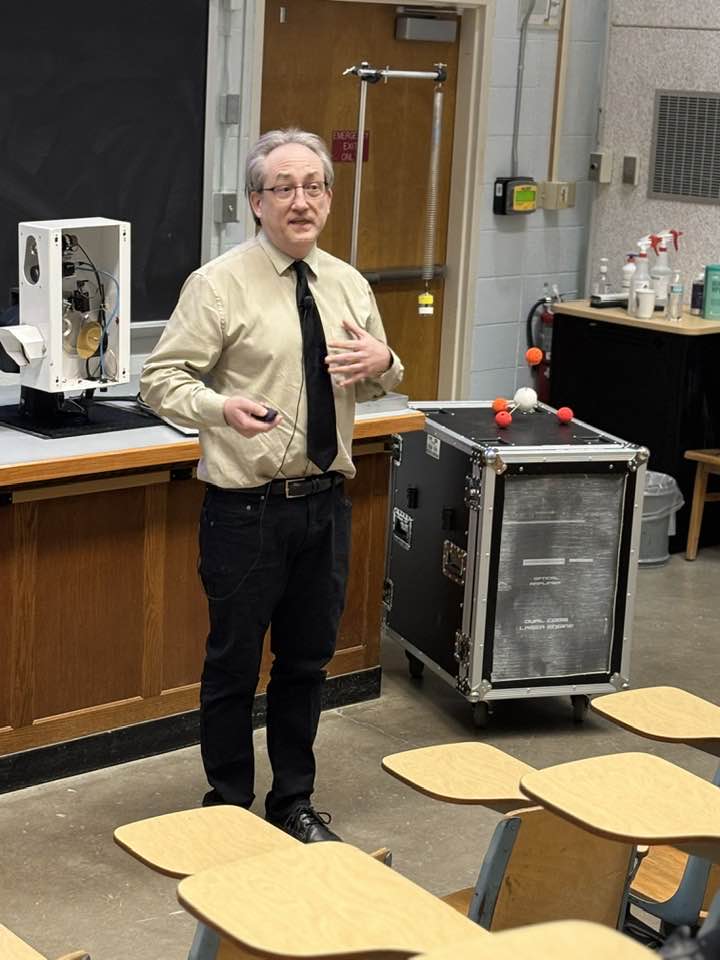Past Favorite & Future Insights
Lecture Series Welcome New and Returning Speakers During the past year, the department was pleased to present two lecture series that offered valuable opportunities for professional growth and collaborative engagement. These series featured esteemed new speakers, MIT astrophysicist and Dean Nergis Mavalvala and University of Chicago particle physicist Rocky Kolb, as well as a returning speaker, Brian Washburn, former full-time (currently adjunct) physics faculty at K-State and current NIST project leader.
During the past year, the department was pleased to present two lecture series that offered valuable opportunities for professional growth and collaborative engagement. These series featured esteemed new speakers, MIT astrophysicist and Dean Nergis Mavalvala and University of Chicago particle physicist Rocky Kolb, as well as a returning speaker, Brian Washburn, former full-time (currently adjunct) physics faculty at K-State and current NIST project leader.
The Chester Peterson, Jr. Public Lecture welcomed MIT School of Science Dean Nergis Mavalvala to hear her non-technical presentation, "Gravitational Waves: A New Window to the Universe." Dean Mavalvala, a leading expert in the detection of gravitational waves, captivated the audience with her discussion of her groundbreaking research. She explained how these ripples in spacetime, generated by violent cosmic events like colliding black holes, offer a new way to observe the universe.
The lecture also delved into the quantum technology that enables the Laser Interferometer Gravitational-wave Observatory (LIGO) to measure these minute disturbances. Dr. Mavalvala's involvement in the team that announced the first direct detection of gravitational waves in 2016 marked a pivotal moment in astrophysics.
As part of the event, the department invited regional high school students to explore campus science departments, enjoy lunch with Dean Mavalvala, and attend her lecture from the front row.
The James R. Neff lecture series captivated audiences with diverse and engaging topics including "The Quantum and the Cosmos" a fall 2024 lecture that featured Edward "Rocky" Kolb, the Arthur Holly Compton Distinguished Service Professor of Astronomy and Astrophysics at The University of Chicago. Kolb, a leading voice in theoretical astrophysics and particle physics, explored the deep links between the quantum world and the expansive universe. His unique perspective stemmed from his ability to connect these intricate fields, showing how quantum mechanics, the science of the submicroscopic, was instrumental in forming the largest cosmic structures during the Big Bang. This work provided insights into phenomena like dark matter and dark energy.
 "Combing the Atmosphere for Trace Gases: How Advances in Physics can Help Agriculture" a spring 2025 lecture showcased the practical applications of physics in addressing real-world challenges. Dr. Brian Washburn, a physicist and project leader at the National Institute of Standards and Technology (NIST), captivated the audience with his talk on innovative laser technology for monitoring agricultural gas emissions. This collaborative research effort between NIST and K-State focuses specifically on tracking methane and ammonia from cattle. The presentation highlighted how advances in physics, specifically a Nobel Prize-winning laser frequency comb, can contribute to sustainable agricultural practices and better understand the environmental footprint of livestock production. Dr. Washburn, a former K-State physics faculty member and now an adjunct professor, remains closely tied to the university.
"Combing the Atmosphere for Trace Gases: How Advances in Physics can Help Agriculture" a spring 2025 lecture showcased the practical applications of physics in addressing real-world challenges. Dr. Brian Washburn, a physicist and project leader at the National Institute of Standards and Technology (NIST), captivated the audience with his talk on innovative laser technology for monitoring agricultural gas emissions. This collaborative research effort between NIST and K-State focuses specifically on tracking methane and ammonia from cattle. The presentation highlighted how advances in physics, specifically a Nobel Prize-winning laser frequency comb, can contribute to sustainable agricultural practices and better understand the environmental footprint of livestock production. Dr. Washburn, a former K-State physics faculty member and now an adjunct professor, remains closely tied to the university.
These lecture series provide invaluable opportunities for students, faculty, and the wider community to engage with leading minds in diverse fields, furthering intellectual exploration and showcasing the department's commitment to innovative research and education.